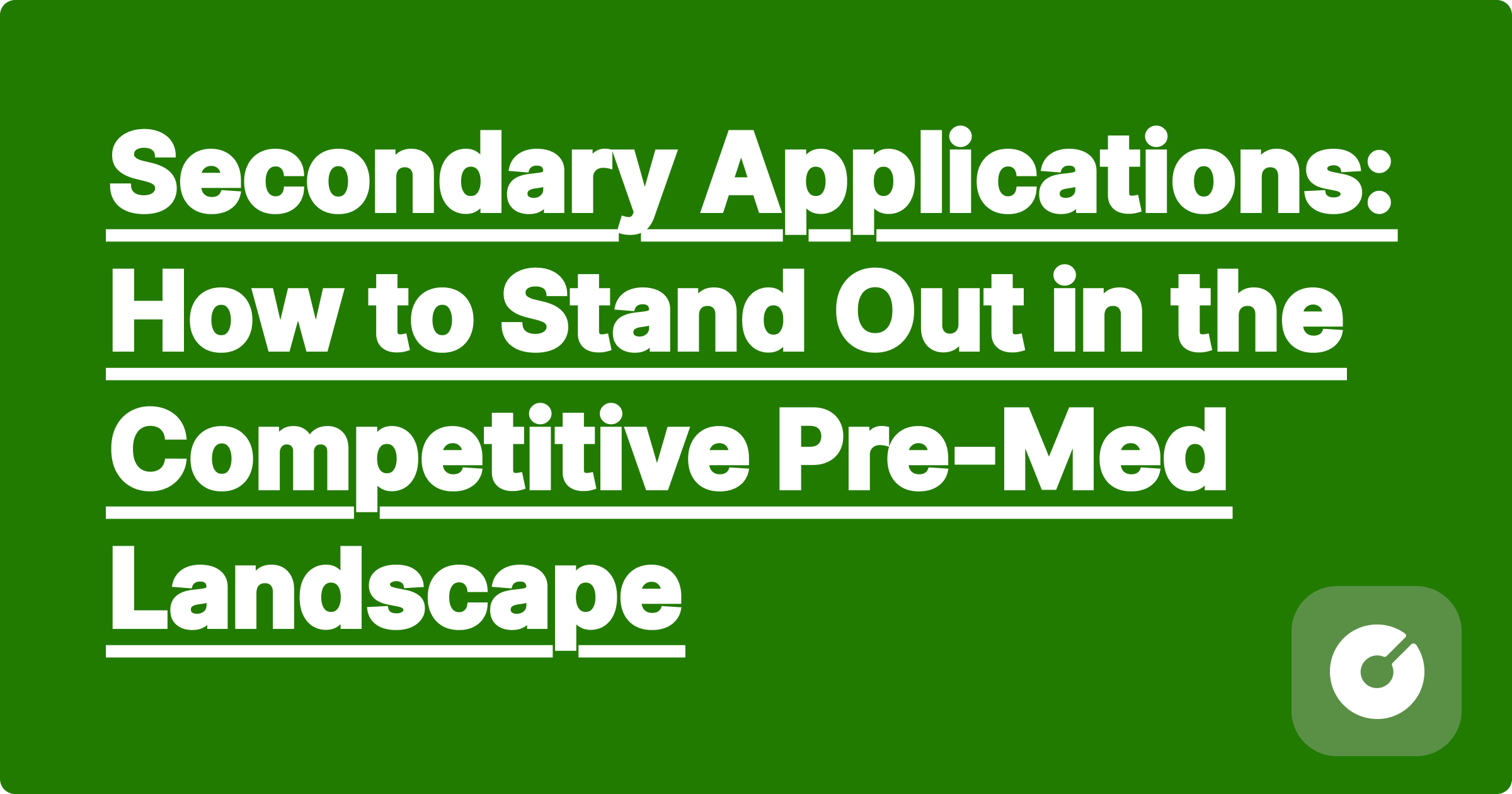
The journey to medical school is a marathon, not a sprint. While the primary application (AMCAS, AACOMAS, TMDSAS) is a crucial first step, it's the secondary applications that often determine your fate. These supplemental essays, unique to each medical school, require a deeper dive into your personality, experiences, and aspirations. With acceptance rates hovering around single digits for many top schools in 2024, crafting compelling secondary applications is paramount. This comprehensive guide will equip you with the strategies and knowledge needed to stand out from the crowd.
Before diving into strategies, let's establish the context. Unfortunately, precise, publicly available data on 2024 secondary application acceptance rates is limited as schools release this information sporadically and often aggregate it. However, we know from past trends that:
Acceptance rates are highly variable: Highly competitive schools like Harvard Medical School and Stanford Medical School boast acceptance rates far below 4%, while others may be slightly higher. Check individual school websites for the most up-to-date information. For example, let's hypothetically assume (since specific 2024 data is not consistently released publicly) that a school like Johns Hopkins might have a 3% acceptance rate, while a slightly less competitive school might have a 6% rate. This highlights the importance of strategic application choices.
Volume is significant: Expect to receive numerous secondary applications, potentially costing hundreds or even thousands of dollars. Budget accordingly.
Timelines are tight: Secondary application deadlines often follow quickly after receiving an invitation. Be prepared for a fast turnaround.
Let's illustrate with a hypothetical example: Imagine a student, Sarah, receives secondary application invitations from Johns Hopkins (hypothetical 3% acceptance rate, average GPA 3.9, average MCAT 518), and a less competitive school (hypothetical 6% acceptance rate, average GPA 3.8, average MCAT 515). Sarah needs to tailor her responses to the specific prompts of each school.
The cost of secondary applications can be substantial. Each application typically ranges from $50 to $150. With potentially 10-20 secondary applications, the total cost could easily reach $500-$3000. This does not include the cost of essay editing services, which can add another $100-$500 to your expenses. Planning your budget early is crucial.
Time management is critical. Create a detailed timeline that accounts for:
The key to a successful secondary application is demonstrating a deep understanding of each school's mission, values, and community. Here's how:
Go beyond the website: Explore the school's research publications, news articles, and social media presence.
Identify key themes: Look for recurring values or initiatives highlighted in their mission statement, curriculum, and faculty profiles.
Address each prompt directly: Don't simply rehash your primary application essay. Provide unique, school-specific answers.
Show, don't tell: Use specific anecdotes and examples to illustrate your qualities and experiences.
Connect your experiences to the school's values: Explain why you believe you'd be a good fit for their specific community and learning environment.
Highlight relevant skills and experiences: Emphasize attributes that align with the school's teaching philosophy and research focus.
Address weaknesses honestly and constructively: Show your ability to learn from mistakes and challenges.
Highlight personal growth: Demonstrate how you've developed and matured over time.
Multiple reviews: Have multiple people proofread your essays for grammar, spelling, and clarity.
* Professional editing: Consider hiring a professional editor for a polished final product.
John, a pre-med student with a strong GPA and MCAT score, meticulously researched each school. For one application, he noticed the school emphasized community service. He wrote an essay focusing on his experience volunteering at a free clinic, highlighting how it shaped his understanding of healthcare disparities and inspired his desire to pursue medicine. This tailored approach helped his application stand out.
Navigating secondary applications is challenging, but with careful planning, strategic essay writing, and a dedicated approach, you can significantly increase your chances of acceptance. Remember, each essay is an opportunity to showcase your unique qualities and demonstrate why you're the ideal candidate. By investing the time and resources required, you'll significantly improve your odds of achieving your dream of becoming a physician. Good luck!
Second Career Medical Students: Changing Paths to a Rewarding Career
Foreign Medical Schools for US Students: A Comprehensive Guide for 2024 and Beyond
Osteopathic Medicine: Growing Acceptance and Benefits for Aspiring Physicians
Joint Degree Programs: MD/MBA, MD/JD, MD/MPH – Your Path to a Multifaceted Career in Medicine
Physician Assistant vs. Medical School: A 2024 Decision Guide for Pre-Med Students
Part-Time Work During Medical School: Is It Possible? A Practical Guide for Pre-Med Students
Balancing Relationships During Medical School: A Guide for Pre-Med Students
Pre-Med Honor Societies: Your Comprehensive Guide to Alpha Epsilon Delta (AED)
Harvard Summer Pre-Med Program Review: Is It Worth the Investment in 2024?
Stanford Medical Youth Science Program (SMYSP): Your Pre-Med Path to Success